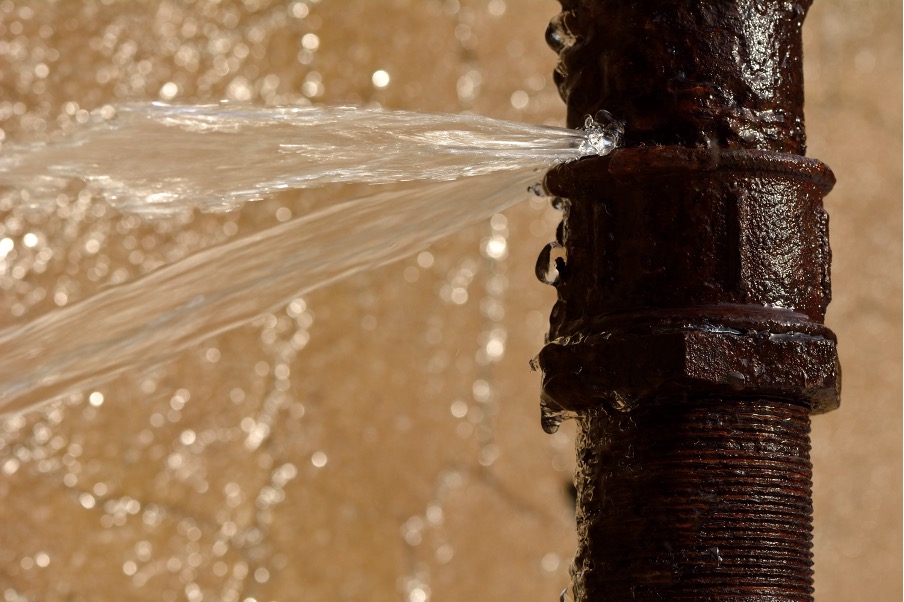On this page in the next paragraph you will find lots of outstanding news on the subject of Hacks to detect leaks.

Early detection of leaking water lines can mitigate a possible calamity. Apart from saving you money, it will certainly reduce the irritation and frustration. The minute you locate a leak, calling your plumber for repair work is the very best option. Some tiny water leaks might not be visible. If you can not identify it with your nude eyes, right here are some hacks that help.
1. Examine the Water Meter
Every house has a water meter. Checking it is a surefire way that aids you uncover leakages. For starters, turn off all the water sources. Make certain nobody will certainly flush, make use of the faucet, shower, run the washing device or dishwasher. From there, most likely to the meter and also watch if it will alter. Considering that nobody is utilizing it, there should be no movements. If it moves, that indicates a fast-moving leakage. Furthermore, if you find no changes, wait an hour or more and also check back once more. This suggests you may have a slow leakage that can also be below ground.
2. Inspect Water Consumption
If you spot unexpected adjustments, despite your usage being the same, it suggests that you have leaks in your plumbing system. An unexpected spike in your bill shows a fast-moving leakage.
Meanwhile, a consistent rise every month, even with the exact same practices, reveals you have a sluggish leak that's likewise slowly rising. Call a plumber to thoroughly examine your residential or commercial property, specifically if you feel a cozy area on your flooring with piping below.
3. Do a Food Coloring Test
When it comes to water consumption, 30% comes from commodes. If the shade somehow infiltrates your bowl throughout that time without flushing, there's a leakage between the storage tank and bowl.
4. Asses Exterior Lines
Don't forget to inspect your outside water lines as well. Test spigots by connecting a garden hose. Should water seep out of the connection, you have a loosened rubber gasket. Change this and also make certain all connections are tight. It will aid obtain it skillfully took a look at and preserved annually if you've obtained a lawn sprinkler system. One small leak can throw away tons of water as well as increase your water bill.
5. Evaluate the circumstance as well as check
Homeowners need to make it a behavior to check under the sink counters as well as even inside cabinets for any bad odor or mold growth. These two warnings show a leak so timely attention is called for. Doing routine assessments, even bi-annually, can conserve you from a significant trouble.
Examine for discolorations and compromising as a lot of pipelines and also devices have a life expectations. If you presume dripping water lines in your plumbing system, don't wait for it to intensify.
Early detection of leaking water lines can reduce a potential disaster. Some tiny water leakages might not be visible. Inspecting it is a surefire method that helps you find leakages. One little leak can waste tons of water as well as spike your water costs.
If you believe leaking water lines in your plumbing system, do not wait for it to escalate.
How to Know If Your Home Has a Hidden Leak
Water Meter Reveals Inexplicable Water Usage
If you’d like to test whether or not there’s a leak somewhere in your home, you can do this using your water meter. Here is how to conduct the test:
Don’t use any water in your home for at least 30 minutes; this also means not turning on faucets or water-using appliances.
Go outside, and check your water meter for activity.
If your water meter shows that there was activity, even though no one was using any water, this proves that there is a leak in your home.Visible Mold or Mildew Growth
Leaks behind walls create moist, dark environments that allow mold and mildew to grow and thrive. Eventually, you might see mold growth forming on the wall closest to a hidden leak.
If mold is growing in an area that receives a high amount of moisture, such as a bathroom, it may simply be an indication that better ventilation is needed. However, if you see mold growth on a wall or the ceiling in an area where you would not expect, you probably have a hidden leak.
Musty, Mildew Odor
Sometimes you might not be able to see the mold or mildew that is growing as a result of a leak. However, the smell can give the problem away just as easily. If you catch a whiff of something musty, there’s a good chance that old water is collecting somewhere in your home that you can’t see.
Stained/Warped Walls, Ceilings, or Floors
When your home soaks up water, a variety of red flags can become visible, including ceiling stains, bubbling drywall, warped walls, and sagging floors. While these issues can be caused by excess humidity, they can also be signs that a pipe or plumbing connection has started leaking behind your walls.
Inexplicably High Water Bill
After a while, you get a general sense for what your water bill should be. If you own a pool or sprinkler system, your bill will tend to be higher during summer. However, if you receive a water bill that seems especially high, and you can’t figure out what caused it, then you may have a hidden leak somewhere that’s increasing your bill.
https://www.plumbingjoint.com/blog/2019/july/how-to-know-if-your-home-has-a-hidden-leak/

As a person who reads about Hacks to detect leaks, I figured sharing that portion was really useful. Do you know another person who is occupied with the subject? Why not share it. Thanks a lot for taking the time to read it.